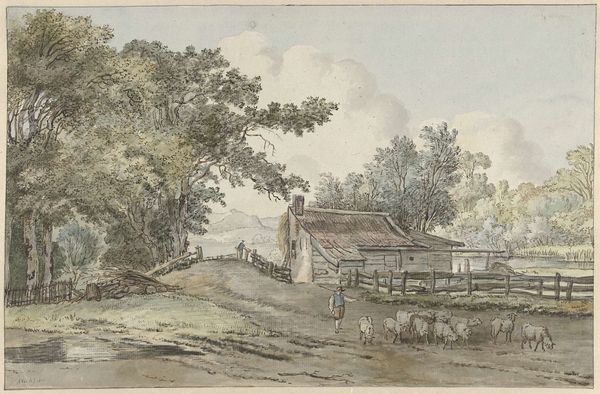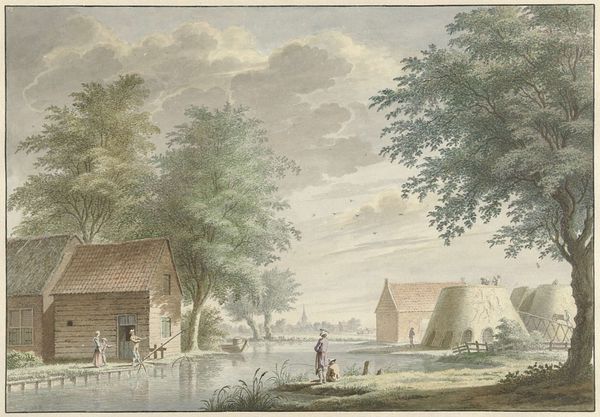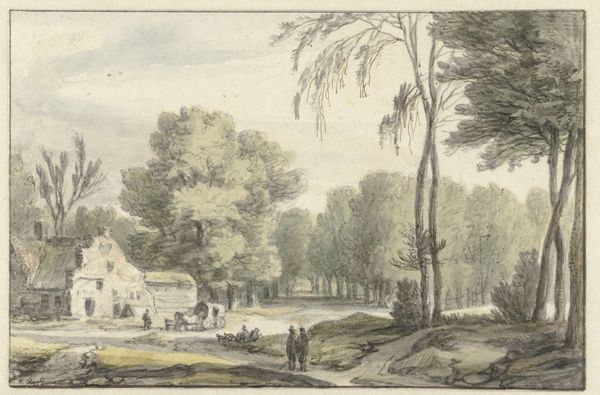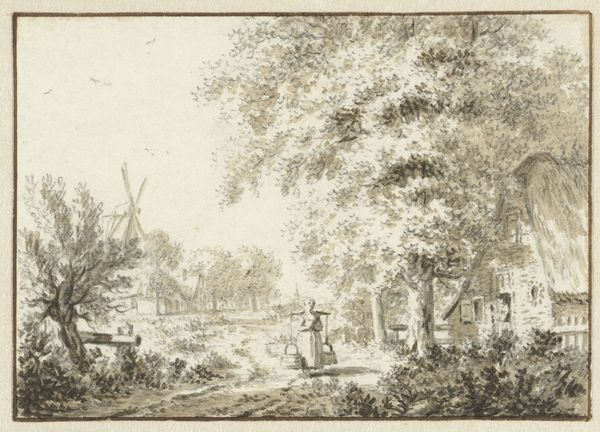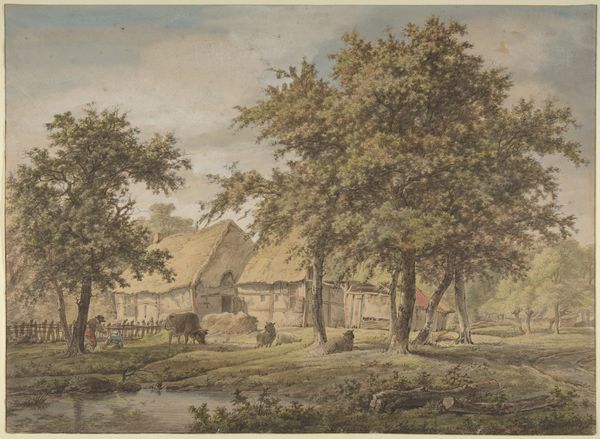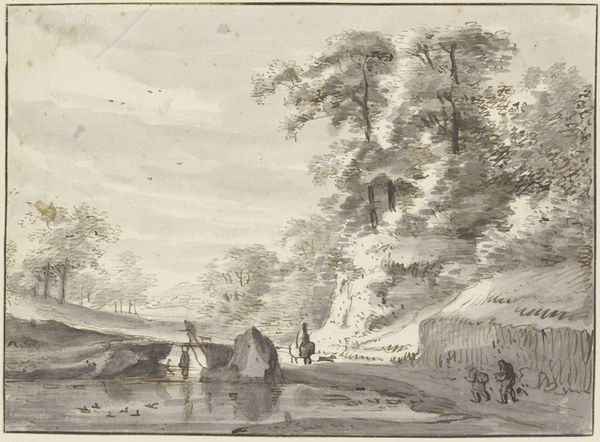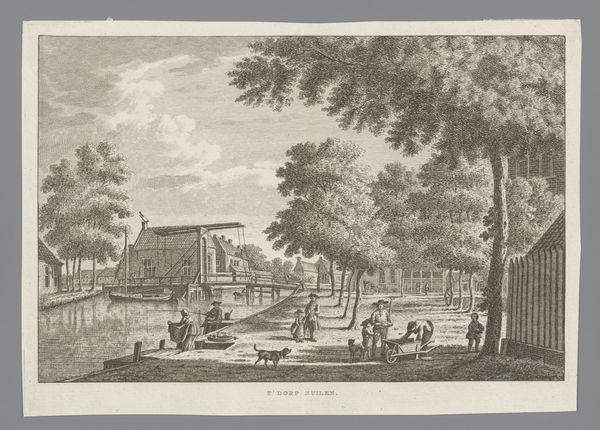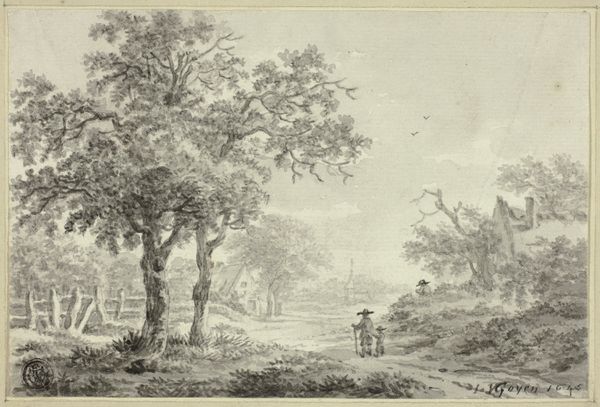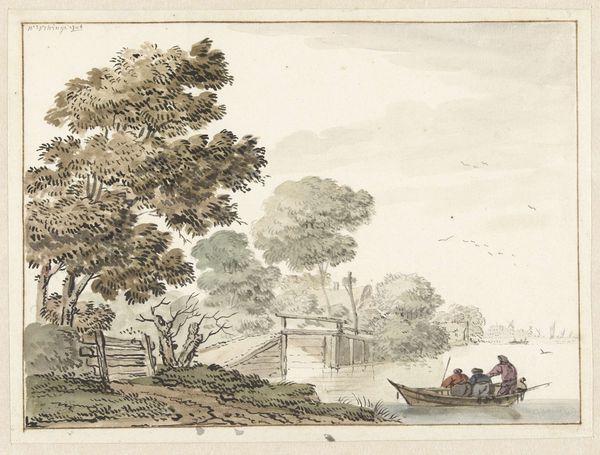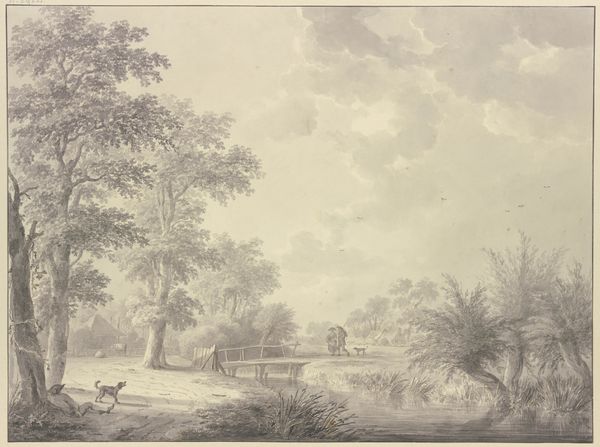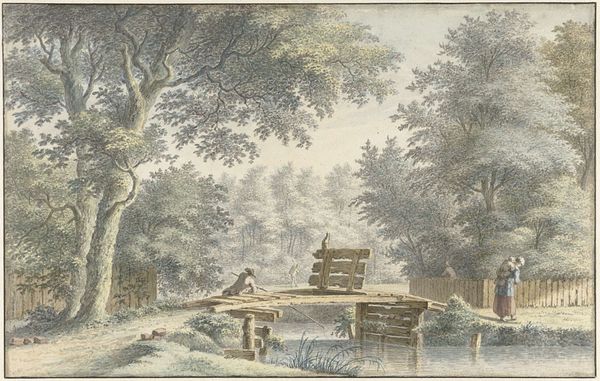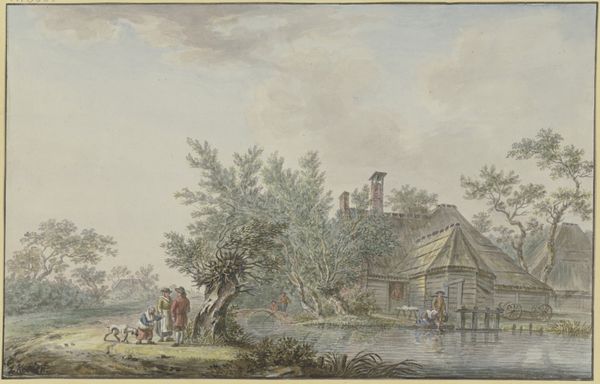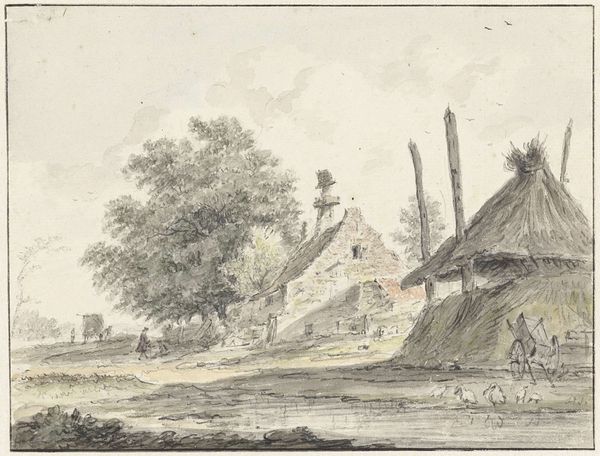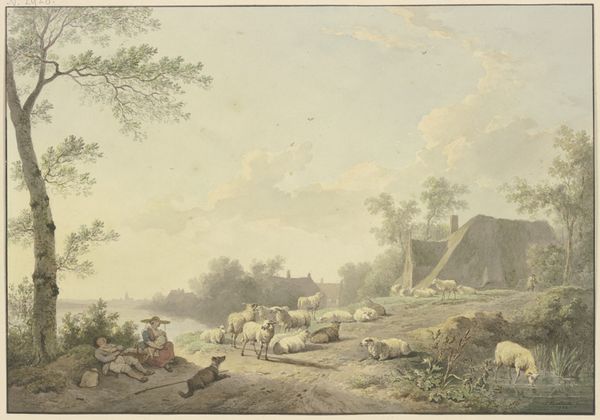
drawing, paper, watercolor
#
drawing
#
dutch-golden-age
#
landscape
#
paper
#
watercolor
#
romanticism
#
watercolour illustration
#
genre-painting
Dimensions: height 123 mm, width 191 mm
Copyright: Rijks Museum: Open Domain
Curator: Hermanus Petrus Schouten, working in the late 18th and early 19th centuries, rendered this tranquil scene entitled "Farm on a Canal with a Drawbridge." It's watercolor on paper, and the delicate application of color gives it a real sense of atmosphere. Editor: Immediately, I’m drawn to the sense of place, a very specific geography evoked through humble materials. You can almost smell the damp earth and river reeds. Curator: It certainly evokes the Romantic spirit, doesn’t it? There’s a quiet reverence for the everyday rural life and the relationship of the people to the landscape. Note how the bridge serves not only as a functional passage but as a visual anchor, subtly dividing labor between the figure drawing water on the left, and transport on the right. Editor: It's more than romantic, it's also very Dutch. Think of all the labor involved in creating these spaces, managing the waterways to ensure that the ground can be reclaimed to serve domestic farm and house. See also the raw, practical construction of the bridge contrasted with the airy brushwork in the trees, almost opposing values made to live side-by-side in the image. The very pale watercolour also evokes an era before the artificial saturation of contemporary imaging! Curator: You bring up an excellent point about practicality and nation. These scenes were resonant reminders of Dutch ingenuity, of the triumph over water – a powerful symbol considering their history! Beyond practicality, it speaks of ingenuity that links back through cultural memory and ongoing struggles. The Romantic painters, indeed, artists broadly, frequently found themselves charged with visualizing these very abstract feelings! Editor: It does remind us of the relationship between nature and society. We might read the artwork as idyllic; however, by studying the materials, labor and design behind them we can come to understand just how reliant this image is on power systems, trade networks and land management. I imagine it wasn't just some amateur painter who took these images but well-trained makers whose lives depended on depicting particular subjects. Curator: That brings so much depth to it, doesn’t it? A seemingly simple scene suddenly carries the weight of cultural identity and persistent effort. I appreciate your insight. Editor: And I appreciate how you highlighted its deeper symbolic meaning; it brings context to the landscape beyond what initially meets the eye.
Comments
No comments
Be the first to comment and join the conversation on the ultimate creative platform.
